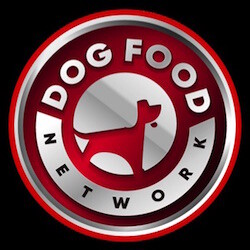Golden Retriever Food Aggression: Causes, Signs, and Safe Training Methods
Golden Retrievers are celebrated for their sunny dispositions, steadfast loyalty, and profound affection towards humans, making them beloved members of many families. Despite their generally amiable nature, they are not immune to certain behaviors that may cause concern for their owners. One such behavior is resource guarding, commonly manifested as food aggression. This tendency, while potentially unsettling, can often be traced back to instinctual drives that are not entirely eradicated despite domestication. Recognizing the signs of food aggression early on is imperative for addressing this issue effectively.
Food aggression in Golden Retrievers may surface through various indicators such as growling, snapping, or assuming a protective stance over their meals. These reactions are rooted in a primal instinct to guard valuable resources, a survival mechanism seen in their wolf ancestors. Understanding this behavior from an evolutionary perspective can provide insight into why even the most gentle and friendly dogs might display such protective tendencies.
Search: Best Selling Golden Retriever Products
Addressing food aggression requires a multifaceted approach that encompasses patience, consistency, and positive reinforcement techniques. Training strategies such as desensitization, where the dog is gradually accustomed to human presence near their food, and counter-conditioning, which involves associating the approach of a person with positive outcomes, are effective methods. Additionally, teaching commands that promote impulse control, like “leave it” or “wait,” can be beneficial in managing this behavior.
It’s crucial for owners to approach this challenge with empathy and an understanding that correction involves trust and positive associations, rather than punishment. Professional guidance from a certified dog trainer or a veterinary behaviorist may also be necessary to tailor a training program that suits the individual needs of the dog and ensures the safety of all involved. By comprehensively understanding the roots of food aggression and employing safe, effective training strategies, owners can help their Golden Retrievers navigate this issue, reinforcing the bond between them and fostering a harmonious living environment.
What is Food Aggression in Golden Retrievers?
Food aggression in Golden Retrievers, as with other breeds, is essentially a survival mechanism rooted in their instincts. This behavior is not exclusive to this breed but can be observed across many, though it may seem surprising given the Golden Retriever’s reputation for being exceptionally friendly and sociable. The condition arises from the dog’s perception of a threat to their food or other valuable items, triggering a protective response. It’s crucial for owners to recognize early signs of food aggression, which can include growling, stiffening, and glaring, as these behaviors indicate the dog’s discomfort with anyone approaching its valued possessions.
Addressing food aggression involves training and behavior modification strategies aimed at teaching the dog that humans approaching their food or possessions is not a threat but a positive occurrence. Techniques such as hand-feeding, adding more food while they are eating to build trust, and teaching the dog to wait calmly before meals can be effective. It’s also important to consult with a professional dog trainer or a veterinary behaviorist for tailored advice and intervention strategies. Early intervention is key to managing and reducing food aggression, ensuring a harmonious relationship between the dog and its family.
Why Do Golden Retrievers Develop Food Aggression?
While deeply distressing for owners, it’s important to understand that food aggression often stems from a place of insecurity. Here are some common causes:
- Early Life Experiences: Puppies who experienced intense competition with littermates or food scarcity may learn to fiercely guard anything they perceive as a valuable resource. These early lessons shape their behavior.
- Survival Instinct: Dogs possess an innate instinct to protect resources essential for survival. While plentiful food for pet dogs negates the biological need for this, the instinct can be powerful.
- Medical Conditions: Underlying pain or discomfort can make dogs irritable and more prone to lashing out. Ruling out medical causes is a crucial first step.
- Anxiety and Fear: Dogs who feel anxious or threatened may become more protective of resources, especially if they sense a chaotic or unpredictable environment.
- Unintentional Reinforcement: If a dog’s growling or defensive stance leads to someone retreating and leaving them alone with their food, the behavior is unwittingly reinforced. They learn this strategy “works.”
The Role of Early Socialization in Prevention
Responsible breeders and owners play a crucial role in preventing food aggression by providing puppies with positive early experiences. Well-socialized puppies learn to:
- Share Resources Peacefully: Feeding puppies in individual bowls but in close proximity teaches sharing without competition.
- Associate People with Good Things: Gently hand-feeding puppies or adding special treats to their food bowl builds positive associations with human presence.
- Trust in Handling: Regular, gentle handling of food bowls during mealtimes accustoms puppies to people near their food without feeling threatened.
Recognizing the Signs: Early Detection is Key
Most dogs don’t suddenly become food aggressive. Identifying the initial signs allows for timely intervention before the behavior worsens. Pay attention to your Golden Retriever’s behavior around food:
- Stiffening of the Body: Muscle tension, rigid posture, or a complete freeze when someone approaches their food bowl.
- Intense Stare: A focused, unblinking stare directed at whoever your dog perceives as a threat near their food.
- Low Growls: Growling acts as a clear warning. The intensity of the growl might escalate if the perceived threat increases.
- Air Snapping or Lunges: Attempts to drive away the person or animal by snapping in the air or lunging forward.
- Biting: The most serious manifestation of food aggression.
Management: Safety as a Priority
- Never Punish for Warning Signs: Suppressing growls can lead to bites without warning. Punishment will erode trust and worsen your dog’s underlying anxiety.
- Prevention Focused: Manage situations to keep people and other pets safe. Feed your dog in a separate room, use baby gates for additional barriers, or consider crate training for mealtimes if necessary.
- Veterinary Consultation: Rule out any underlying medical issues causing pain or discomfort. Your veterinarian can also discuss if medication to address anxiety is helpful for your dog’s situation.
Addressing Resource Guarding Beyond Food
Golden Retrievers exhibiting food aggression may also guard other things they find valuable. Here’s how to address it holistically:
- Identifying Triggers: Observe your dog to understand WHAT they are possessive about. It might be a special toy, a cozy napping spot, or even access to a favored human.
- Apply the Principles: The same techniques of counterconditioning and the “Hand for a Paw” approach can be effective for non-food items.
- Consistency is Key: Help your Golden learn that relinquishing a prized possession leads to positive outcomes – even better treats, a fun play session, or lots of praise.
Training: Building Trust and Changing Associations
Addressing food aggression in Golden Retrievers requires a patient, systematic approach emphasizing positive experiences. Here’s a breakdown of the process:
-
Counterconditioning: This involves shifting your dog’s negative association with people near their food to a positive one.
- Scenario 1: Tossing Treats: Start at a comfortable distance. Drop incredibly delicious treats (bits of roast chicken, cheese) a good distance from their bowl while they eat. Never put treats IN the bowl. Gradually shorten the distance over time as your dog shows less concern.
- Scenario 2: Hand-Feeding: Progress to hand-feeding small treats while they eat from their bowl. By associating your hands with good things, it decreases fear of their food being taken.
-
“Hand for a Paw” Technique:
- Starting Point: Gently ask your dog to sit and offer a closed fist of tasty treats.
- Bowl Exchange: While they eat those, calmly pick up their bowl, add a few extra delicious bits, and return it immediately. This teaches them good things happen when humans touch their food.
- Advanced Option: Practice briefly taking the bowl away and immediately giving it back with even better additions after your dog is comfortable with the initial step.
Step-by-Step Training Examples
Let’s illustrate how to navigate real-world situations with your Golden Retriever:
-
Scenario: Dropping Food on the Floor
- Old Response: Your Golden might have growled if you approached the dropped food.
- New Approach: Stand at a non-threatening distance and toss higher-value treats near the dropped food. Gradually take a step closer until eventually, you can pick up the initial food item and replace it with something amazing.
-
Scenario: Child Walking By
- Old Response: Your dog may have stiffened or growled when a child wandered near while they were eating.
- New Approach: Have an adult helper guide the child past at a safe distance, simultaneously tossing high-value treats near your dog’s bowl. With repetition, your dog will associate passing children with positive things.
Important Training Considerations
- Professional Help: Seek guidance from a Certified Dog Behavior Consultant (CDBC) or veterinary behaviorist if aggression is severe, you’re unsure of safe handling, or progress stalls.
- Safety for All: Never leave children unsupervised around a dog with food aggression. Management remains crucial.
- Patience is Essential: Overcoming food aggression takes time and consistency. Focus on building trust with every tiny success.
With dedication and the right guidance, you can help your beloved Golden Retriever feel safe and secure around food and other resources. The result is a happier dog, reduced anxiety for you, and a stronger bond built on trust.



